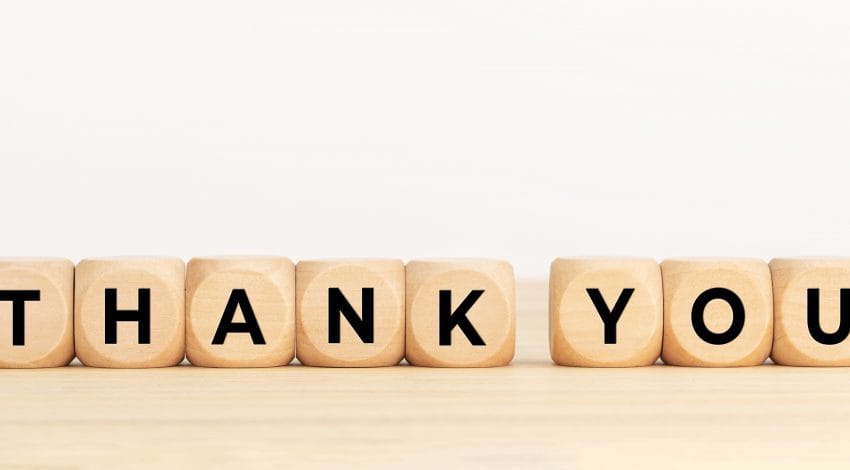As we approach Thanksgiving during the COVID-19 pandemic, it’s important to recognize the healing power of gratitude, both for ourselves, and for those we lead.
Gratitude is both something we feel, and something we express. Leaders intent on building an engaged, high-performing workforce AND having high personal satisfaction will benefit from both.
Feeling Gratitude – The “Inside” Game
Let’s start with feeling gratitude. That’s the inside game. Robert A. Emmons, PhD, a psychologist from the University of California – Davis, is a leading expert on gratitude and its effect on the body and mind. In his article, Why Gratitude is Good, Emmons identifies how gratitude improves physical, psychological, and social wellbeing. I have included Emmons’ summary below. As you read the lists citing the physical, psychological, and social benefits, I encourage you to put the information in context of the COVID-19 pandemic. We all need these benefits to nourish our weary minds and bodies, especially as we face another surge.
Physical Benefits
- Stronger immune systems.
- Not as bothered by aches and pains.
- Lower blood pressure.
- Exercise more and take better care of their health.
- Sleep longer and feel more refreshed upon waking.
Psychological Benefits
- Higher levels of positive emotions.
- More alert, alive, and awake.
- More joy, optimism, happiness, and pleasure.
Social Benefits
- More helpful, generous, and compassionate
- More forgiving
- Feel less lonely and isolated.
- More outgoing
Reading this list, I couldn’t help but feel that, especially now, we could all benefit from a large dose of gratitude.
Showing Gratitude through Recognition
Feeling gratitude has the potential for making YOU feel better. Showing gratitude to others will give both you and the recipient a boost.
One of the best ways to show gratitude to your employees is through personal recognition. It is a low-cost, no-cost, yet effective method of generating employee engagement, but sadly underutilized.
According to Gallup’s analysis, only one in three workers in the U.S. strongly agree that they received recognition or praise for doing good work in the past seven days. At any given company, it’s not uncommon for employees to feel that their best efforts are routinely ignored. Further, employees who do not feel adequately recognized are twice as likely to say they’ll quit in the next year.
In our Be the Leader Nobody Wants to Leave course, we teach the 3-Ps of recognition. Recognition should be prompt, personal, and plentiful in order to be most meaningful.
Gallup conducted a workplace survey where employees were asked to recall who gave them their most meaningful and memorable recognition. The data revealed the most memorable recognition comes most often from an employee’s manager (28%), followed by a high-level leader or CEO (24%), the manager’s manager (12%), a customer (10%) and finally, peers (9%). Worth mentioning, 17% cited “other” as the source of their most memorable recognition.
The pandemic has placed additional stress your employees who are likely dealing with stress about physical safety, finances, and parenting, making it all the more vital that they feel valued for their contributions.
Gratitude is good medicine. Take a large dose and pass it on.
Tags: Employee Appreciation, Employee Engagement, employee relations, engagement, gratitude, thank you

